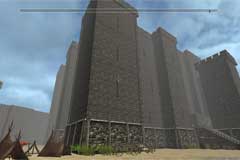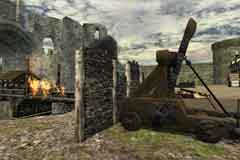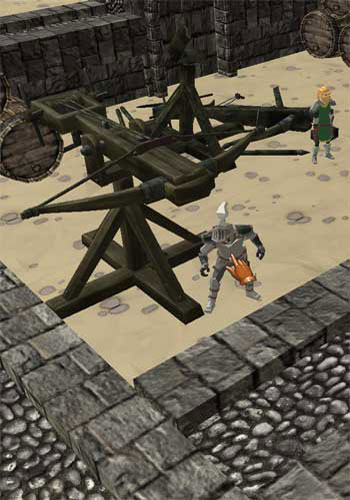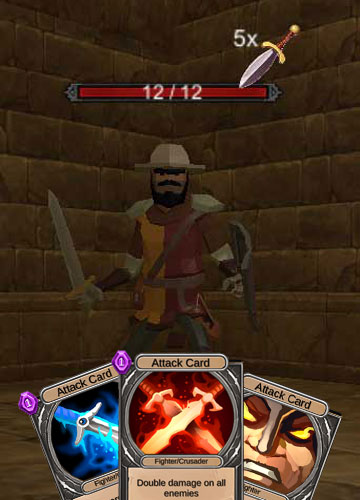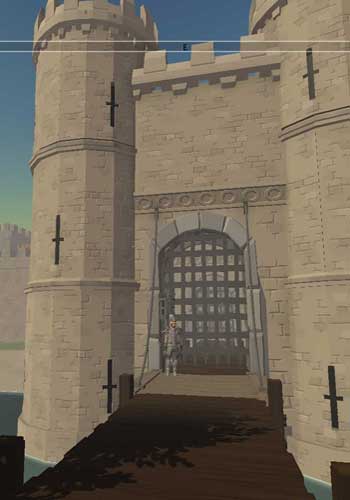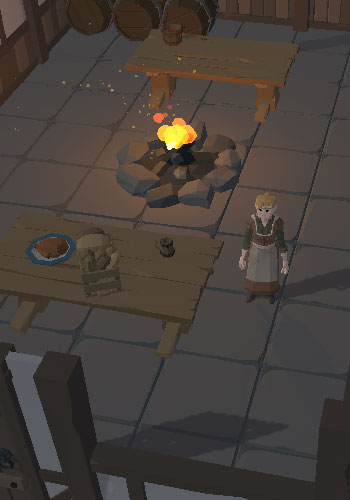 enry VIII was the second son of Henry VII and Elizabeth of York. He became heir to the English throne when his elder brother Arthur died in 1502. Henry had excellent schooling learning both French and Latin. He was skilled at music and later wrote pieces of music for his wives one of which was Greensleeves. He was very athletic and enjoyed jousting. Henry VII died in April of 1509 and Henry became king of England. Henry was only seventeen when he became king and, as he had never been brought up expecting to be king, was happy to leave the affairs of the country to several advisers. These included Warham the Archbishop of Canterbury, the Earl of Surrey who was the Lord Treasurer, Bishop Foxe and later Thomas Wolsey. Henry dismissed two advisers from his father's reign that had become unpopular with the English people. The two, Empson and Dudley, were found guilty of treason and were executed. Henry was crowned at Westminster Abbey on the 24th of June, 1509. Shortly before the coronation Henry married Catherine of Aragon, the first of his six wives.
enry VIII was the second son of Henry VII and Elizabeth of York. He became heir to the English throne when his elder brother Arthur died in 1502. Henry had excellent schooling learning both French and Latin. He was skilled at music and later wrote pieces of music for his wives one of which was Greensleeves. He was very athletic and enjoyed jousting. Henry VII died in April of 1509 and Henry became king of England. Henry was only seventeen when he became king and, as he had never been brought up expecting to be king, was happy to leave the affairs of the country to several advisers. These included Warham the Archbishop of Canterbury, the Earl of Surrey who was the Lord Treasurer, Bishop Foxe and later Thomas Wolsey. Henry dismissed two advisers from his father's reign that had become unpopular with the English people. The two, Empson and Dudley, were found guilty of treason and were executed. Henry was crowned at Westminster Abbey on the 24th of June, 1509. Shortly before the coronation Henry married Catherine of Aragon, the first of his six wives. Catherine of Aragon
Catherine of Aragon was the wife of Henry's elder brother Arthur. The marriage between Catherine and Arthur was arranged by Arthur's father Henry VII as part of a campaign of securing peace in Europe. As the daughter of Ferdinand and Isabella of Aragon, the marriage would secure trust between the two countries. Catherine arrived in England in 1501 and in the November was married to Arthur then heir to the English throne. Within months Arthur had fallen ill and died. Arrangements were then made to marry Catherine and Henry, now heir to the English throne. Henry and Catherine were married at Greenwich in 1509 a month before they were both crowned at Westminster Abbey. Catherine was five years older than Henry. She gave birth to a baby boy in January of 1511, but unfortunately the child died a few weeks later. Catherine had several more babies but all died in infancy until Mary was born in February of 1516. Mary was healthy and Henry now had an heir to the throne but he really wanted a son. Henry began to believe that the marriage to Catherine was wrong because she was his late brother's wife and this was why they were not having the son that Henry needed. Henry needed the marriage to be declared invalid so he could marry again.Anne Boleyn
Anne was the daughter of Sir Thomas Boleyn. Her elder sister Mary had become the mistress of Henry VIII. Henry's attentions turned to Anne but she was not happy to be just his mistress, she wanted to be his wife. Henry was still married to Catherine of Aragon but their marriage had broken down because Catherine could not provide the King with a male heir. Henry wanted the Pope to declare that the marriage to Catherine was invalid, mainly because Catherine had been married to his late brother and in the Bible this was seen as a sin. Henry and Anne were married in January of 1533. Anne gave birth to their first child in September of the same year. The child, called Elizabeth, was a girl much to Henry's dismay but the child was healthy and Henry felt sure that Anne would give him the son he needed. Anne then had a series of stillborn births and finally she had a premature birth in January of 1536 when she was informed that Henry had fallen from his horse and was seriously injured. Henry lost interest in Anne and looked for a way to end the marriage. Anne was accused of adultery and was executed for treason. Elizabeth, her daughter, would later become Elizabeth I, Queen of England.Jane Seymour
Jane Seymour was the third wife of Henry VIII and mother of Edward VI. She was the daughter of Sir John Seymour a close aid to Henry VIII. Jane worked as a lady-in-waiting to both Catherine of Aragon and Anne Boleyn. Jane appears to have come to Henry's attention in late 1535 or early 1536 and in May of 1536 they were married. Jane was never given a coronation as the plague struck England in the summer and it was decided to postpone the ceremony. By mid 1537 it was confirmed that Jane was pregnant and on the 12th of October 1537 their son Edward VI was born at Hampton Court. The birth had complications and Jane became ill and died on the 24th of October. Jane was buried in St. George's Chapel at Windsor and Henry gave instructions that when he died he should be buried next to her in the chapel. Of all his wives Jane seems to have been Henry's favourite.Anne of Cleves
Anne was the fourth wife of Henry VIII. It had been two years since the death of Jane Seymour when the marriage to Anne was suggested by Thomas Cromwell. A marriage to the sisters of the Dukes of Cleve would create a strong European political alliance. In order for Henry to see what Anne and her sister Amelia looked like the artist Hans Holbein was sent to paint their portraits. The painting of Anne was flattering and Henry agreed to the marriage. When Henry saw Anne, who arrived in England on the 1st of January 1540, he was disappointed that the she did not not look like her portrait. At first he wanted to cancel the wedding but the organisation had gone too far and so the marriage took place on the 6th of January. The marriage was a marriage in name only and Henry sought the means to have a divorce. He even unkindly called Anne 'The Flander's mare'. Anne understood the situation and accepted the divorce along with a good income and the use of several homes including Hever Castle. Anne died on the 16th or 17th of July 1557.Catherine Howard
Catherine Howard was the fifth wife of Henry VIII. Catherine had been a lady-in-waiting to Anne of Cleves and had come to the attention of Henry. She was much younger than Henry who was now almost fifty and had gained a lot of weight. The marriage took place only weeks after Henry's marriage to Anne of Cleves was annulled in July of 1540. Catherine soon tired of the king and began a series of affairs with men nearer her age. Two of these were Thomas Culpeper and Francis Dereham. Word of the adultery finally reached Henry who at first refused to believe the news. Catherine and her lovers were arrested and found guilty of treason. Catherine was executed on the 13th of February 1542.Catherine Parr
Catherine Parr was the sixth and final wife of Henry VIII. She had been made a widow twice by former marriages and was in her early thirties. Henry proposed to Catherine and she accepted although she was in love with Thomas Seymour (brother of Jane Seymour?). Henry and Catherine were married on the 12th of July, 1543. Henry's health was poor due to the leg injury he had suffered when he fell from his horse and Catherine took on the role of his nurse. Catherine also became step-mother to his three children Edward, Mary and Elizabeth who she brought together as family. Catherine and Henry had a dispute over religion and Henry ordered Catherine's arrest. The dispute was settled and the arrest order was cancelled. After Henry died Catherine married Thomas Seymour. She died in 1548.

















